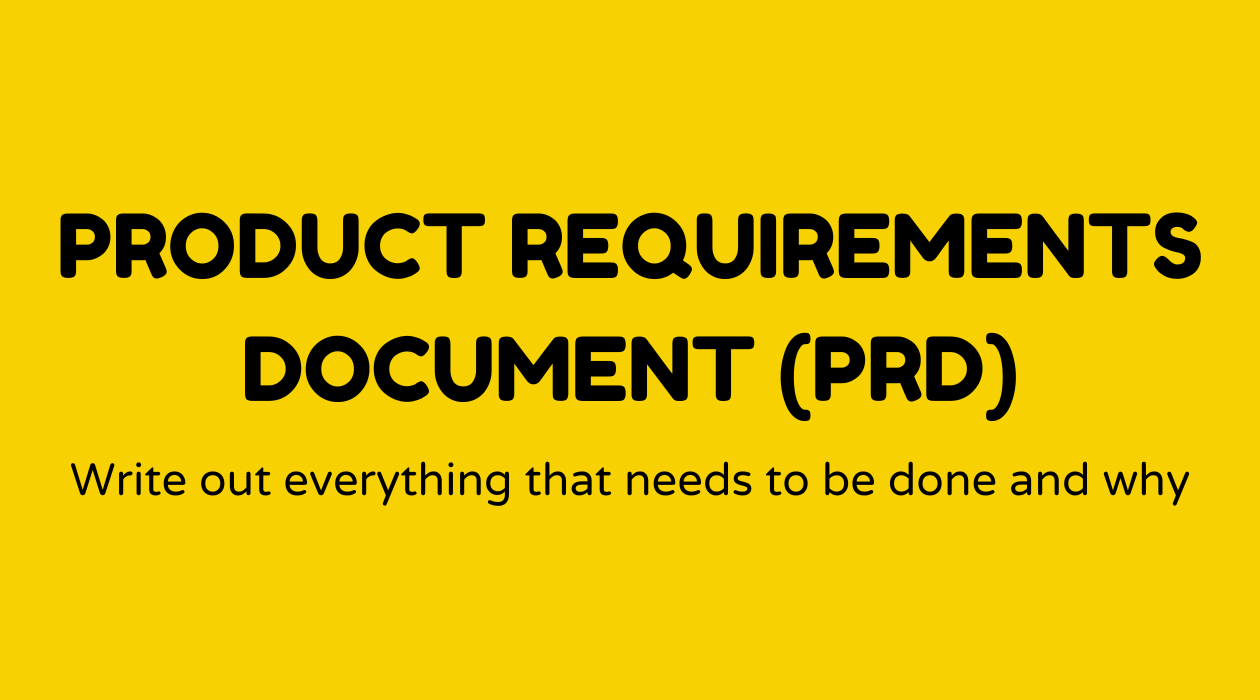Product requirements document (PRD)

3 Overview of Product Requirements Document (PRD):
A Product Requirements Document (PRD) serves as a foundational element for effective product development. It acts as a blueprint, specifying everything necessary for a product to evolve from concept to reality. This document delineates essential functionalities, features, and user needs that the product intends to address.
In the expansive field of product management, a PRD functions as a guiding principle. It ensures that all participants, from designers to developers, share a common understanding. Consistency and clarity are vital in this context, as they help mitigate miscommunication and scope expansion.
For those engaging in product development, mastering the art of crafting an effective PRD is essential. It involves more than just outlining what a product should accomplish; it also entails aligning teams and setting realistic benchmarks.
Why Product Requirements Document Matters:
Creating a PRD is akin to laying the first foundation stone for a building. With a sturdy framework, you establish conditions for a smoother, more efficient construction process.
-
Clarity and Focus: A well-crafted PRD delivers a clear depiction of what the product is intended to achieve. This keeps the project’s direction steady and prevents it from deviating.
-
Communication: It serves as an important communication resource among stakeholders. Designers, developers, marketers, and even customers can refer to the PRD to comprehend the product's objectives and boundaries.
-
Avoiding Misunderstandings: By outlining the product requirements, teams can steer clear of misunderstandings that commonly lead to costly delays and rework.
-
Setting Expectations: It aligns team expectations regarding deliverables and serves as a reference point for success.
What is a Product Requirements Document (PRD)?
A Product Requirements Document is a detailed guide that articulates the expectations for a new product or feature. It generally encompasses:
- Objective: An overview of the product's goal and the rationale behind its development.
- Features/Specifications: In-depth descriptions of the product’s functionalities.
- Assumptions: Conditions presumed to be accurate for the project to be successful.
- Constraints: Limitations that could influence the product, such as budgetary or time restrictions.
- Acceptance Criteria: Conditions under which the product would be approved by the user or client.
Let’s consider an analogy. Imagine planning a road trip. The destination, planned stops, and travel mode are similar to the features in your PRD. Without a strategy, you might take a wrong turn and deviate from your planned route.
How do you Create a Product Requirements Document?
-
Gathering Inputs: Engage stakeholders, perform market research, and collect customer feedback to grasp their needs.
-
Define Objectives: Clearly articulate what the product should achieve and align it with larger business goals.
-
Detail Features: Enumerate all features and specifications the product should contain. Keep a balance between ambition and practicality.
-
Assumptions & Constraints: Clarify any presumptions and limitations to detail what your team will and won't handle.
-
Acceptance Criteria: Set criteria to evaluate the project’s success, ensuring alignment with stakeholder expectations.
-
Review & Revise: Upon drafting, distribute it among stakeholders for feedback and make necessary adjustments.
-
Approval: Obtain formal approval from key stakeholders to ensure commitment.
Sample Agenda of Product Requirements Document Workshop:
- Introduction & Objectives: A brief overview of the workshop's purpose and expected outcomes.
- Stakeholder Input Sessions: Collecting insights from various teams involved.
- Feature Prioritization: Ranking features based on feasibility and importance.
- Draft Review: Discussing the initial draft of the PRD.
- Feedback Session: Inviting feedback and discussion.
- Wrap Up: Summarizing the next steps and timelines.
Examples of Product Requirements Documents:
Real-world examples offer valuable perspectives on how a PRD is structured and the level of detail it demands. Companies like Google and Facebook heavily rely on PRDs to refine their product offerings. Their PRDs often include insights from customers, analyses of the market, and a strategic approach to feature implementation.
For instance, a tech startup may develop a PRD for a new app, outlining the problem it addresses, the target audience, competitive analysis, and core features such as user login, dashboard, and notification settings.
FAQs
What is the difference between a PRD and an MRD?
- A PRD specifies what the product will accomplish, while a Market Requirements Document (MRD) focuses on why a product will prosper in the market.
How detailed should a PRD be?
- The detail level should correspond to the project's complexity. For larger projects, more detail ensures clarity; smaller initiatives may require less.
Who is responsible for writing the PRD?
- Generally, a product manager takes on the task of drafting the PRD, but they consult multiple stakeholders throughout the process.
Can a PRD change during development?
- Yes, it's typical for PRDs to adapt as new information emerges or priorities shift. Nevertheless, changes should be managed carefully.
How is a PRD different from user stories?
- User stories describe user interactions with the system and are more granular. A PRD provides a broad overview of product requirements.
Is there a specific format for a PRD?
- There isn’t a universal format, though many organizations adhere to a standard template that fits their workflow. The key is clarity and thoroughness.



